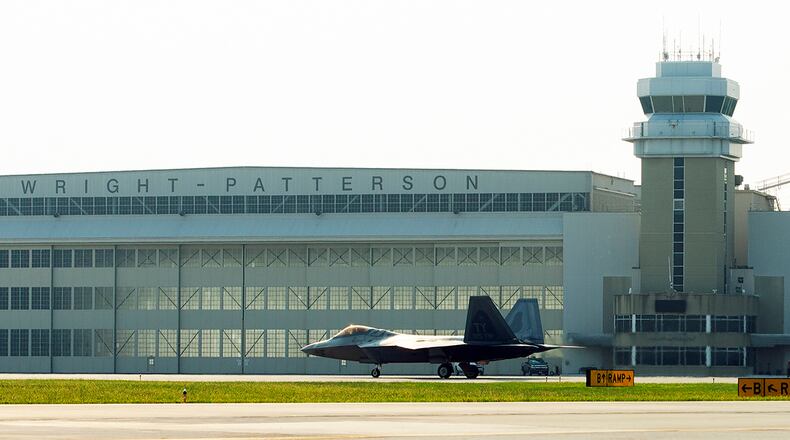City and county legislative bodies will likely decide over the next month whether to join the council of governments. The proposed organization has been in the works for about a year, said Schommer. Over the last few weeks, he finished the proposal which will be presented to other governments' legislative bodies for approval.
Credit: MARSHALL GORBY/STAFF
Credit: MARSHALL GORBY/STAFF
Schommer said a council of governments would allow area communities to form a “unified approach” to development plans, zoning issues and other matters that impact the air force base.
This comes as Dayton area leaders aim to attract the new U.S. Space Force headquarters. The U.S. Space Command would bring about 1,400 military and civilian jobs to the area once established.
Associate or advisory members of the council would likely include the Wright-Patterson Air Force Base, Dayton Development Coalition, Miami Valley Regional Planning Commission and Congressman Mike Turner’s office.
In an emailed statement, a base spokesman said Wright-Patterson leadership is excited to collaborate with communities surrounding the base.
“This new forum places an emphasis on compatible land uses around the installation,” the statement said. “While we all face similar challenges, we do not have to try to solve them on our own … We look forward to every opportunity to tear down the proverbial fence and work hand-in-hand with community leaders. Wright-Patterson AFB is just one of many municipalities that make this region so great.”
David Burrows, DDC vice president of engagement, said local governments and organizations want to see the base grow and thrive, adding more jobs to the region.
“We are continually advocating for the base and continually having conversations with leadership there,” he said. “So it just makes sense that all this gets married together in the Council of Governments to handle these issues as they come up.”
In an emailed statement, U.S. House Rep. Mike Turner said he brought the cities surrounding Wright-Patterson together with the help of the DDC to discuss “how we can best develop the land around the base.”
“Wright-Patt has helped insulate our community from what could have been significantly increased joblessness during this pandemic,” he said. “Our community understands the importance of the base to our region and national security.”
After all the area governments vote whether to join WPRCOG, the council would create bylaws that would then be filed with the Ohio Auditor of State.
The first step for the council would then be to commission a Combined Use Plan, said Schommer. The plan would advise council member governments' plans so future development of the region supports the operations and possible expansion of Wright-Patterson.
To pay for a combined use plan and other operations of the council, the WPRCOG would be able to apply for grant funding from the state and federal governments, said Burrows. Schommer said any council expenses, such as funds needed to fulfill a matching grant, would be shared equally among member governments.
About the Author


